- Home
- Clive Cussler
The Mayan Secrets Page 8
The Mayan Secrets Read online
Page 8
“What were the problems?”
“One was the climate. Most of Mayan country was humid jungle. When books get wet, they rot. Some codices were buried in tombs—some at Copán, some at Altun Ha in Belize, some at Uaxactún Guytan. The fig-bark fabric rotted, leaving little piles of painted stucco fragments too small and delicate to ever be pieced together. But the biggest problem arrived in ships.”
“The Spanish conquest,” said Sam.
“Mainly the priests. They made a point of destroying anything having to do with native religions. Mayan gods looked like devils to them. They burned every book they found and then searched every hiding place so no book could survive. This went on from the beginning of the Mayan conquest in the 1500s until the 1690s, when they took the last cities. That’s why only four are left.”
“And now five,” said Remi.
“It’s a spectacular find,” said Caine. “Do you have a place to put it where it will be safe?”
“We do,” said Sam. “We’ll lock it up tight.”
“Good. I’d like to get started on the dating process and then come back tomorrow to start examining the codex. Is that possible?”
“I’d say it’s mandatory,” said Sam. “We’re as curious as you are and we can’t satisfy our curiosity without you.”
LA JOLLA
The next afternoon, Sam and Remi were waiting when David Caine arrived. After Sam and Remi took him into the climate-controlled room, Remi put on surgical gloves, opened one of the glass cabinets, and set the codex on the table. Caine sat for a moment, staring at the cover. “Before we begin,” he said, “the carbon dating is complete on the seeds and husks that were in the wooden bowls and on the wood itself. The samples all had 94.29 percent of their carbon 14. The wood and the plants died at about the same time, which is four hundred seventy-six years ago, in 1537.”
“Isn’t that sort of late for a classic Mayan?” asked Remi.
“It’s well into the end-time of the civilization. Most major classic cities had been abandoned by around 1000 A.D. Others stood until the Spanish got to them, beginning around 1524, when Pedro de Alvarado attacked the Maya with a huge army of native allies from Tlaxcala and Cholula. But there were many Mayan kingdoms that took a long time to be conquered. The last few fell in 1697, more than a hundred fifty years later.”
Remi said, “So what we found was a high-ranking man who picked up a pot from somewhere near Copán in Honduras. He put a book inside it and set off on foot. He went four hundred miles or so, then climbed all the way up the side of the Tacaná volcano in Mexico and put it in a shrine.”
“I would say it’s almost certain that something of that sort happened. Why he did it, we can only guess at this point.”
“Do you have a guess?” asked Sam.
“I think that he was taking an extremely precious book to a secret and remote place to hide it from the Spaniards. Judging from your photographs of the site, you’re probably right that it was a small stone shrine. Inside are pictures of Cizin, god of earthquakes and death, who was the bringer of earthquakes. He’s the dancing skeleton with the dangling eyeballs.”
“Then, what?”
“I’m just guessing, remember. At some point, the shrine was covered by a lava flow from the volcano. It’s even possible that he intentionally placed the book in the shrine, knowing the likelihood that it would be covered by lava, believing that a god was giving him a perfect way to seal the book in a safe place.”
“Do you think he would do that?”
Caine shrugged. “The Mayans had a strong belief in an afterlife in which they would be rewarded or punished. They also believed that the universe was kept in balance by what they did. Much of the knowledge they accumulated in books about astronomy and mathematics was intended to tell them what they should do to keep the universe from spinning out of control and destroying itself like an unbalanced machine. By 1537, this man’s universe had been showing signs of coming apart for hundreds of years. There had been terrible droughts from 750 to 900 A.D., a series of wars between cities, disease. And then the Spaniards came. Their arrival in 1524 was like the landing of aliens in a horror movie. They carried weapons nobody could fight or make for themselves. They were bent on destroying what remained of Mayan civilization and killing or enslaving every Mayan person. It was the final curse after a long series of curses. A Mayan—and this was a person of the royal class—would have taken the long view. These are people whose calendar was divided into cycles 5,125 years long. He might have believed that the book he was saving contained information essential to keeping the world intact or rebuilding it in the future.”
“I suppose, then, he wouldn’t hesitate to sacrifice himself to save the book.”
Caine said, “Imagine that powerful, humanlike creatures arrived here in spaceships, killed or enslaved everyone they could find, and then began the process of finding every computer, every book, and burning it. Oops! There goes the history of art, and, after it, every painting. There goes calculus, algebra, even arithmetic. They’re burning the books of every religion—all Bibles, the Koran, the Talmud, everything. Did they forget philosophy? Nope, it’s all going into the fire. Every poem, every story, ever written? Up in smoke. Physics, chemistry, biology, medicine; the history of the Romans and Greeks, the Chinese, the Egyptians. All gone.”
“What a terrible, sad idea,” Remi said. “We’d be back in the stone age with no map for the way back here.”
“It also makes me even more curious about the codex,” said Sam. “What was it that our friend managed to save from the fires? What’s in here?”
Caine shrugged. “That’s what’s been keeping me awake for two days.”
There was a knock on the door. “Come in,” Sam called.
Selma entered. “Am I too late?”
“No,” said Remi. “Professor David Caine, this is Selma Wondrash, who is kind enough to work with us as our chief researcher. Whatever the subject is, if Selma doesn’t know the answer, she knows where it can be found.”
Caine stood and they shook hands. “Wondrash. It’s not a common name. Are you related to the S. I. Wondrash who helped catalog the Inca quipu?”
“I am S. I. Wondrash,” she said. “But the quipu project was a long time ago.”
“And there hasn’t been much progress in deciphering them since then,” said Caine. “The strings and knots the Incas used to keep track of things are still incomprehensible to us.”
“I keep hoping somebody will find an old Spanish document that records what an Inca informant said when he revealed how to interpret the different kinds and colors and lengths of strands in quipu.”
“We all do,” said Caine. “The Spanish burned thousands of quipu. There are only a few hundred left, but, thanks to you, we at least know what exists.”
Selma looked down at the codex on the table. “Meanwhile, we have this.”
“We do,” Caine said. “Is everyone ready?”
The others all nodded. Caine put on his gloves and carefully opened the first page to reveal a striking painting. Tiny Mayans moved across the page, carrying baskets. They were accompanied by warriors in full-feathered battle regalia, wearing quilted armor, carrying round shields and wooden clubs with obsidian chunks along the edges. They went through plants that seemed to signify jungles. In one place, they passed over what appeared to be mountains, then arrived at a river valley. There were columns of glyphs covering the top third of the page.
“This is amazing,” Caine said. “The page is a kind of stylized map, a set of directions. It says it leads from Copán to the Motagua River Valley, which is in Guatemala. See this glyph? It’s ya’ax chich, the Mayan term for ‘jade.’”
“Are those people with the baskets going to find jade?” asked Remi.
“More likely, to trade for it,” said Caine. “Yes, it’s trade. They’re bringing valuable jungle products—
bird feathers, jaguar skins, coca—to trade for jade.”
Selma said, “Jadeite was the most valuable substance in the Americas. The only known sources are Burma, Russia, and the Motagua Valley. This appears to show where that is.”
Caine said, “After the Spanish came, the Mayans stopped going there and never told the Spanish where the jade came from. The Spanish wanted only gold and silver, so the location was forgotten. It was quite a mystery for a long time. Then, in 1952, a hurricane passed over the Motagua Valley, and chunks of jade the size of cars washed out of the hillsides.”
Sam said, “Then, until 1952, what we’re looking at would have been a secret?”
“Absolutely,” said Caine. “To the Mayans, a very important secret.”
“And this is only the first page,” said Remi.
As Caine turned the pages carefully, they stared in amazement. There were paintings of gods and heroes engaged in epic stories of creation and the end of eras. There was a factual account of the warfare between Tikal and Calakmul in which Copán backed Tikal. Caine deciphered and translated only enough of each set of glyphs to determine its subject.
After about thirty pages, Caine turned a page to see a partial picture. Since the book was folded like an accordion, he could unfold two pages, lay them flat, and unfold two more to make one four-page display. There were paintings of forests, lakes, mountains. And all over the display were tiny pictures of Mayan buildings.
Sam said, “It looks like a map.” He pointed at a shape jutting out into water. “That looks like the Yucatán Peninsula.”
There were some buildings on the page that looked bigger than the others. “What would that be?” asked Sam.
“The glyphs say that’s Chichen Itza,” said Caine. “This on the coast is Zama, the ancient name of Tulum. Down here is Altun Ha, so this section is Belize. Here in Guatemala is Tikal. There’s Palenque in Mexico.”
“Are these all places you know?” asked Remi.
“Quite a few of them are—Bonampak, Xlapak, Copán. But there are many more names here. There are a number that I’ve never seen before. The current estimate is that about sixty percent of Mayan cities are known and mapped—over a hundred of them. But this shows—what? At least three hundred of the large buildings that seem to be cities? I can see many I’ve never heard of. And there are lots of other sites that seem to be smaller cities. I’ll have to compare them with the current inventory of sites.”
Caine looked at his watch. “Oh. I can’t believe we’ve been at this for five hours. I have to get back to my office to pick up some things and then get home to start going over the existing sites to see what’s not included. Can we take up where we left off tomorrow?”
“Sure,” said Remi.
“I can get here around noon. My classes are all morning seminars tomorrow.”
“We’ll see you then,” said Sam. Remi, Sam, and Zoltán walked Dr. Caine to the door and then watched him drive off.
LA JOLLA
At ten the next morning, Sam and Remi were sitting together on the first floor, working at their computers, to try to learn more about various aspects of Mayan civilization. While he was thinking about something he’d read, Sam’s eyes moved off the screen to Remi. She wore a jade green linen-and-silk dress that set off her eyes and her hair and a pair of Manolo Blahnik sandals in bone leather. Zoltán lay at Remi’s feet, looking contented. But suddenly the big dog let out a low growl, got up, walked through the house to the big double doors at the front, and stood, watching them expectantly. Remi stood up and followed him, glancing out the window on the way.
“Sam,” she called, “we’ve got visitors.”
“Oh?” he said. “Did Dave Caine come early?”
“It’s some people in a black limo.” Sam stood and was walking toward the doors when the doorbell rang.
Remi answered the door. “Hello,” she said. “Can I help you?”
It was a woman, accompanied by three men in dark suits. The woman was very attractive, with deep blue eyes and golden blond hair pulled back into a perfect bun. She was expensively dressed in a blue suit. As she stepped forward and held out her hand, she spoke. “I’m Sarah Allersby, Mrs. Fargo. Remi, isn’t it?” Her British accent was distinctly upper class.
“Well, yes,” Remi said. “Is there something—?”
Sarah Allersby said, “Please, call me Sarah. And these gentlemen are my attorneys—Ronald Fyffe, Carlos Escobedo, and Jaime Salazar. May we come in?” Remi stepped back and shook each attorney’s hand as the four filed past her into the first floor of the house.
Sam was waiting just inside. “And I’m Sam Fargo,” he said. “May I ask what brings you here?”
“Charmed. I hope you don’t mind my taking the unusual step of dropping by like this, but it was unavoidable and urgent. I live in Guatemala City, but I happened to be in Los Angeles last night on another matter when I heard the news, and it was too late to call—long after business hours.”
“We’re not in business anymore,” Sam said.
“How lucky you are. I’m an amateur archaeologist and collector specializing in Central America, but I still have to attend to mundane responsibilities.”
“What news have you heard?” asked Remi.
“That your find at Volcán Tacaná in Mexico included a precious jar from Copán.” She paused. “And also a Mayan codex.”
“Interesting,” Sam said, hiding his shock. “Where could you have heard that?”
She laughed softly. “If I told people about my confidential sources, they wouldn’t be confidential and they’d stop being my sources. They’d hate me.”
“And their sources would hate them,” said Sam.
“And so on,” she said. “It’s a whole ecosystem we have to protect.”
Remi could feel that an awkward moment was stretching into an ordeal, and something about the woman’s tone, or scent, was making Zoltán bristle. Remi petted his head to reassure him, and said to her, “Please come in and sit down.”
Sarah Allersby looked at her watch as she followed Remi into the large open sitting area on the first floor. Sam led the guests to the leather couches arranged around a large glass coffee table near the windows with a view of the Pacific.
“Drink?”
“Tea for all of us, I should guess,” said Sarah. The three lawyers didn’t look eager, but she clearly was enforcing her own rule that she always guessed right. Sam sensed that she wanted to get Remi out of the room and start talking business.
Remi walked off for a minute only. When she returned, she said, “Selma will bring it in when it’s ready.” Zoltán had followed her in. As she sat, Zoltán remained at her feet in a sphinxlike pose, his head erect and his ears straight up, his yellow-and-black eyes unblinking. Remi noticed it and scratched the back of his neck, but he remained as he was, his muscles ready to bring him up and into motion. Remi caught Sam’s eye.
Sam nodded slightly. He and Remi both knew that with these visitors, Zoltán was on guard. “This is Zoltán. Don’t let him make you uncomfortable. He’s very obedient.” He paused. “What can we do for you, Miss Allersby?”
“I came because I hope you won’t mind letting me see what you found on the volcano.” She smiled. “I mean the codex, of course.”
“We haven’t said there was a codex,” said Remi.
Sarah Allersby’s eyes moved to one of her attorneys, and Sam and Remi both caught a hint of irritation so fleeting that most people would have wondered if they’d imagined it. “I’ll be perfectly open,” she said. “Several different confidential sources have confirmed that what you have is, without question, a genuine codex.” She smiled and looked at Remi.
Remi watched her, saying nothing. So did Zoltán.
Sarah persisted. “While you’re being cagey, Dr. Caine has made some calls to other academics here and abroad—linguists, archaeologists,
historians, geologists, biologists. He’s told them what he’s seen and what he thinks will be in the rest of the codex. So I know pretty much what you know. He’s as good as verified publicly that the find is not a forgery. It’s a genuine fifth codex.”
Remi asked, “Why would any of those people reveal their conversations with Dr. Caine to you?”
“I have no illusion that I’m the only one who’s been told. I just move faster than most of the others,” said Sarah Allersby. “I and my family also control a great deal of money for grants and donations to universities. I sometimes let it be known that I’m interested in owning certain things, if they should ever turn up. And of course no matter who owns certain objects, the objects will be kept in museums and universities. It matters a great deal to some people which ones are chosen.”
“Does Dr. Caine know that his colleagues are sharing his conversations with you?” asked Remi.
She laughed. “I wouldn’t know that. I assume he has his own patrons and sources of backing for his research and tells them what he wants them to know.” Her smile was almost a smirk. Her blue eyes were especially cold when she spoke to Remi.
Sam could see that Miss Allersby had assumed that she would come in and dazzle him with her beauty while the mousy wife faded into the background somewhere. She hadn’t been able to adjust to being the second-best-looking woman in the room, and she didn’t like being double-teamed by two questioners. She seemed to will her ego to deflate a little bit. “I don’t flatter myself that I’m the only nonacademic who knows. That’s why I came immediately. And I’ve come such a long way. Can’t I please see it? I’ve already shown you there’s no reason for secrecy. The secret is out. And I am someone who genuinely cares about preserving and protecting these irreplaceable treasures and have spent many millions doing it.”

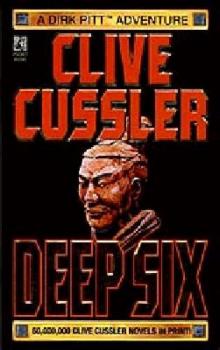 Deep Six
Deep Six Odessa Sea
Odessa Sea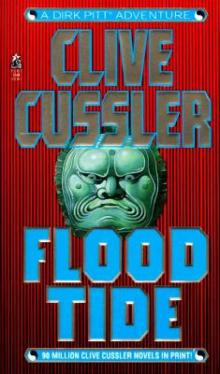 Flood Tide
Flood Tide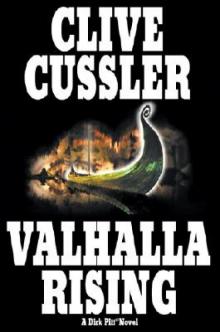 Valhalla Rising
Valhalla Rising Thriller 2
Thriller 2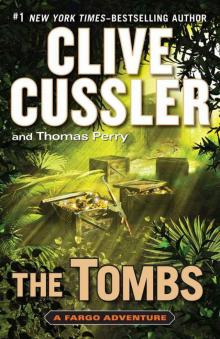 The Tombs
The Tombs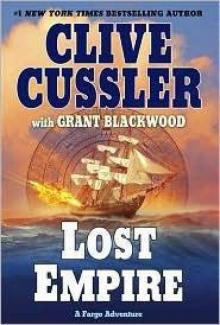 Lost Empire
Lost Empire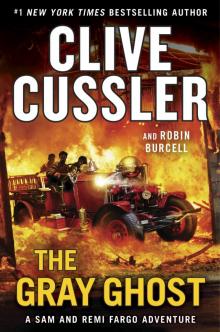 The Gray Ghost
The Gray Ghost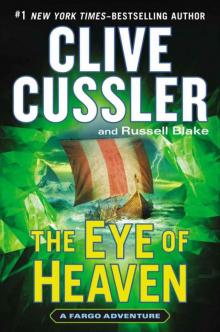 The Eye of Heaven
The Eye of Heaven Polar Shift
Polar Shift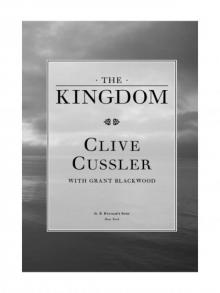 The Kingdom
The Kingdom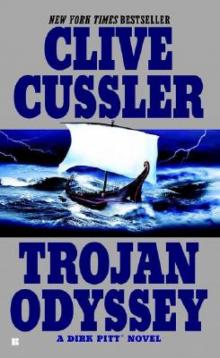 Trojan Odyssey
Trojan Odyssey Shadow Tyrants
Shadow Tyrants Nighthawk
Nighthawk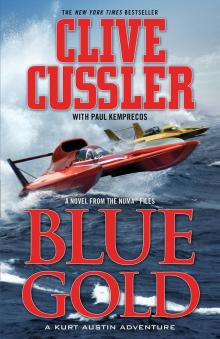 Blue Gold
Blue Gold Serpent
Serpent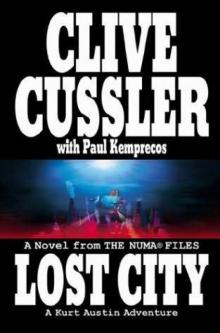 Lost City
Lost City The Gangster
The Gangster White Death
White Death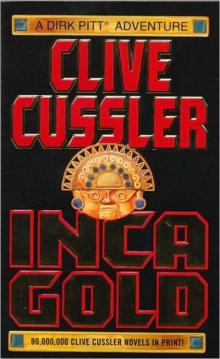 Inca Gold
Inca Gold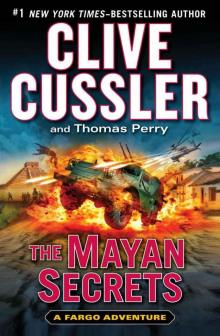 The Mayan Secrets
The Mayan Secrets The Pharaoh's Secret
The Pharaoh's Secret The Emperor's Revenge
The Emperor's Revenge Corsair
Corsair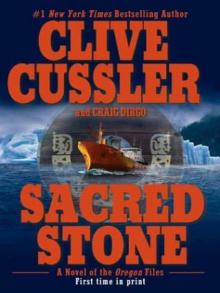 Sacred Stone
Sacred Stone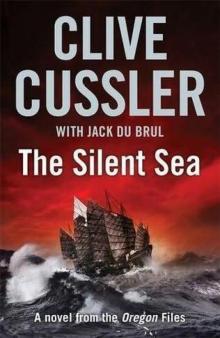 The Silent Sea
The Silent Sea The Rising Sea
The Rising Sea Black Wind
Black Wind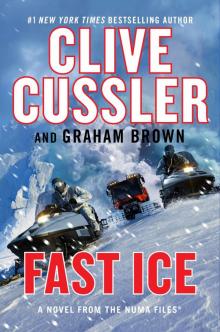 Fast Ice
Fast Ice Ghost Ship
Ghost Ship Marauder
Marauder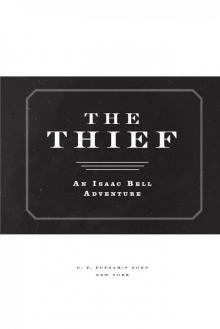 The Thief
The Thief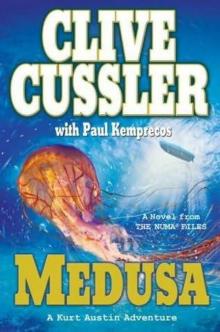 Medusa
Medusa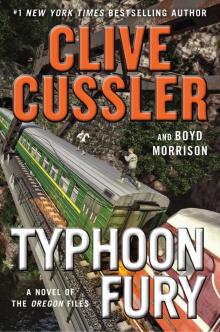 Typhoon Fury
Typhoon Fury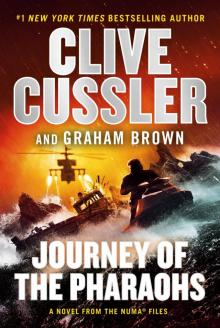 Journey of the Pharaohs
Journey of the Pharaohs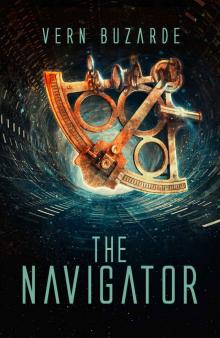 The Navigator
The Navigator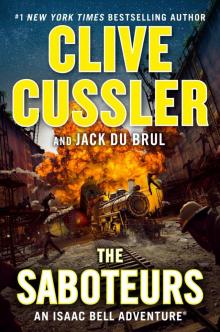 The Saboteurs
The Saboteurs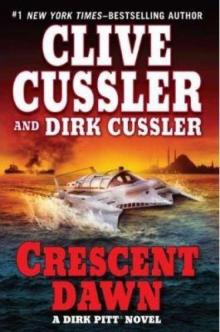 Crescent Dawn
Crescent Dawn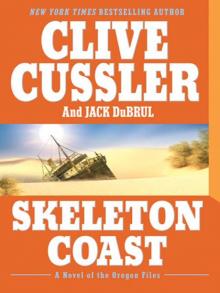 Skeleton Coast
Skeleton Coast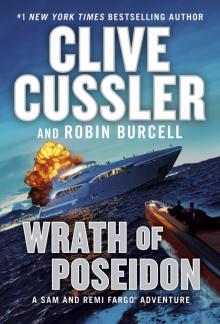 Wrath of Poseidon
Wrath of Poseidon The Mediterranean Caper
The Mediterranean Caper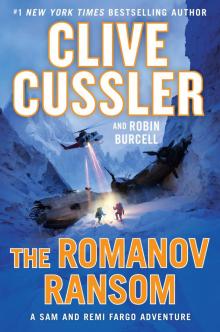 The Romanov Ransom
The Romanov Ransom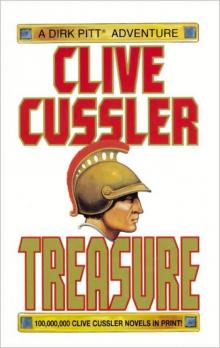 Treasure
Treasure The Race
The Race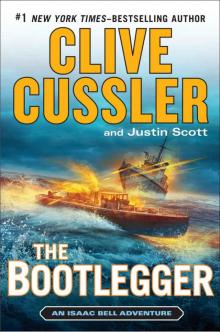 The Bootlegger
The Bootlegger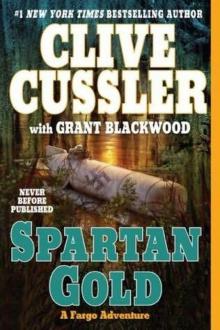 Spartan Gold
Spartan Gold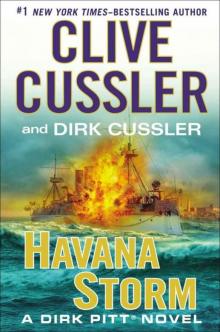 Havana Storm
Havana Storm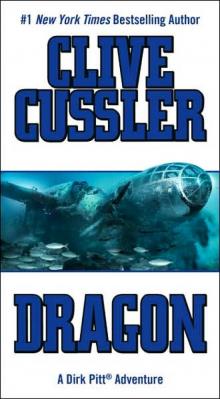 Dragon
Dragon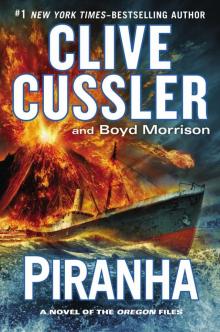 Piranha
Piranha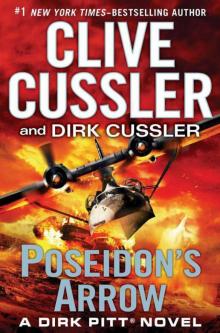 Poseidon's Arrow
Poseidon's Arrow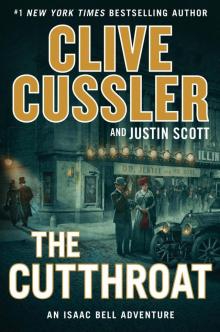 The Cutthroat
The Cutthroat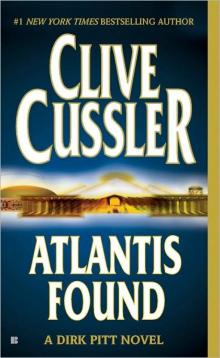 Atlantis Found
Atlantis Found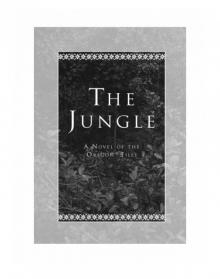 The Jungle
The Jungle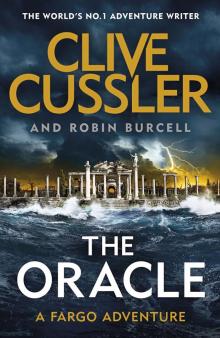 The Oracle
The Oracle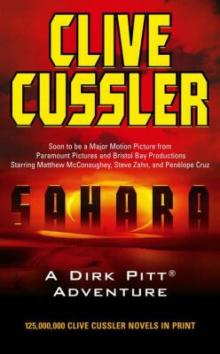 Treasure / Dragon / Sahara: Clive Cussler Gift Set
Treasure / Dragon / Sahara: Clive Cussler Gift Set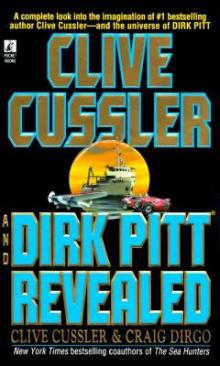 Clive Cussler and Dirk Pitt Revealed
Clive Cussler and Dirk Pitt Revealed The Sea Hunters
The Sea Hunters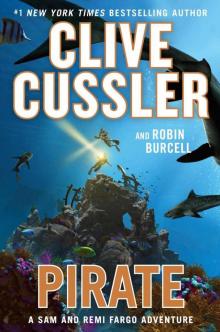 Pirate
Pirate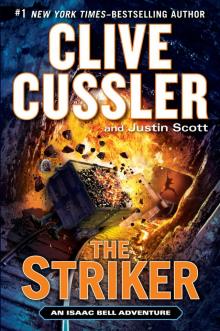 The Striker
The Striker Plague Ship
Plague Ship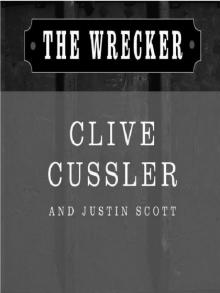 The Wrecker
The Wrecker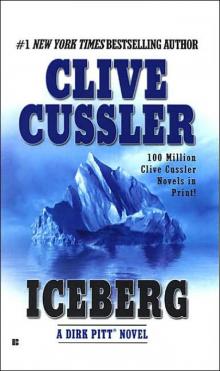 Iceberg
Iceberg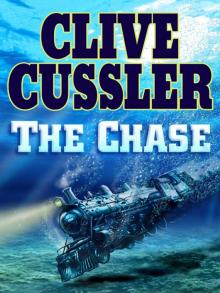 The Chase
The Chase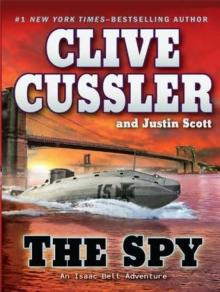 The Spy
The Spy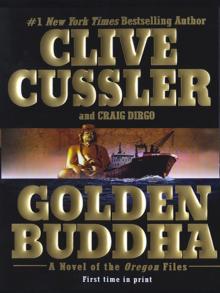 Golden Buddha
Golden Buddha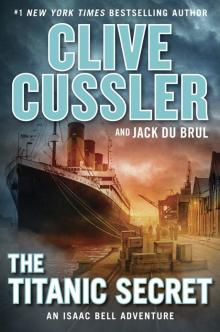 The Titanic Secret
The Titanic Secret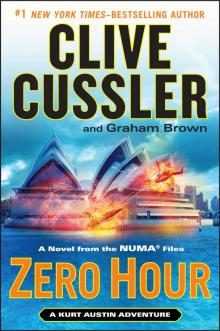 Zero Hour
Zero Hour Fire Ice
Fire Ice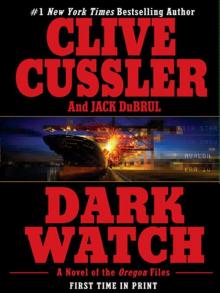 Dark Watch
Dark Watch The Storm
The Storm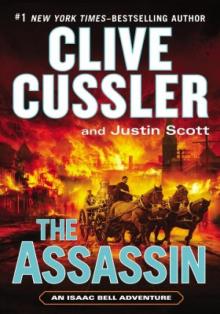 The Assassin
The Assassin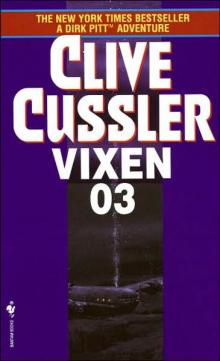 Vixen 03
Vixen 03 Arctic Drift
Arctic Drift Night Probe!
Night Probe! Cyclops
Cyclops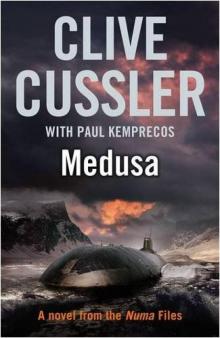 Medusa nf-8
Medusa nf-8 Shock Wave dp-13
Shock Wave dp-13 Marauder (The Oregon Files)
Marauder (The Oregon Files)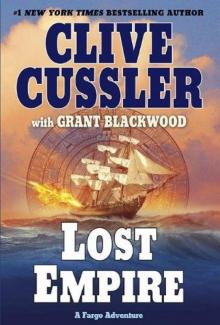 Lost Empire fa-2
Lost Empire fa-2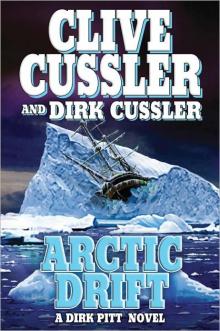 Arctic Drift dp-20
Arctic Drift dp-20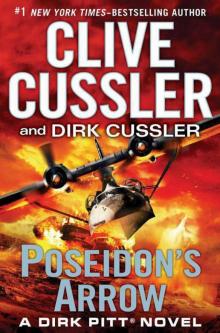 Dirk Pitt 22 - Poseidon's Arrow
Dirk Pitt 22 - Poseidon's Arrow Treasure of Khan dp-19
Treasure of Khan dp-19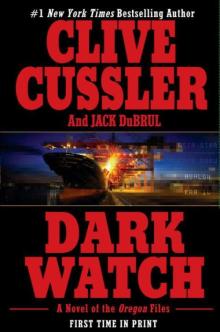 Dark Watch of-3
Dark Watch of-3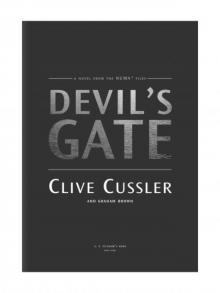 Devil's Gate
Devil's Gate The Sea Hunters II: More True Adventures with Famous Shipwrecks
The Sea Hunters II: More True Adventures with Famous Shipwrecks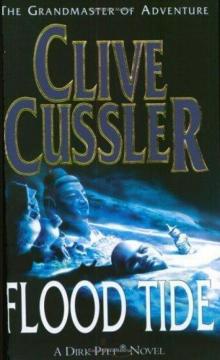 Flood Tide dp-14
Flood Tide dp-14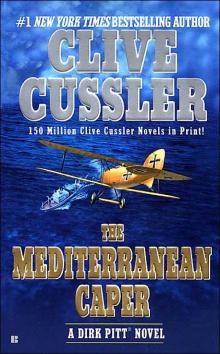 The Mediterranean Caper dp-2
The Mediterranean Caper dp-2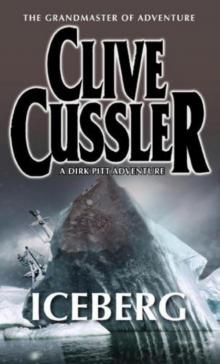 Iceberg dp-3
Iceberg dp-3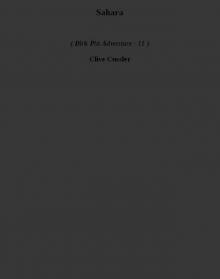 Sahara dpa-11
Sahara dpa-11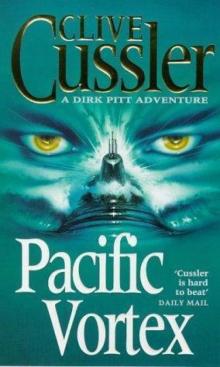 Pacific Vortex! dp-1
Pacific Vortex! dp-1 Deep Six dp-7
Deep Six dp-7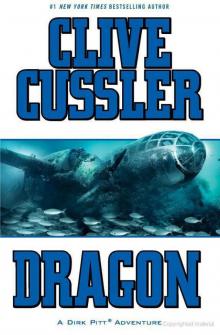 Dragon dp-10
Dragon dp-10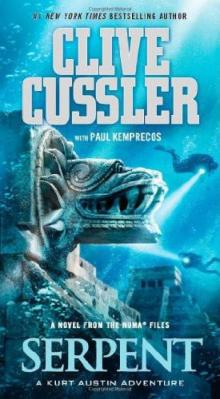 Serpent nf-1
Serpent nf-1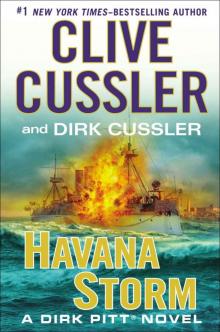 Havana Storm (Dirk Pitt Adventure)
Havana Storm (Dirk Pitt Adventure)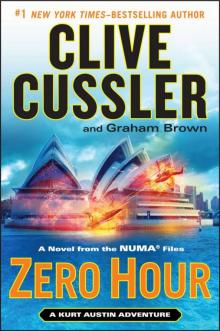 Zero Hour nf-11
Zero Hour nf-11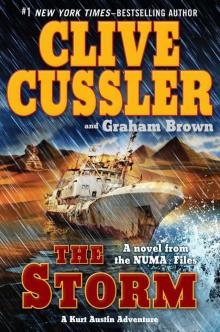 The Storm nf-10
The Storm nf-10 The Thief ib-5
The Thief ib-5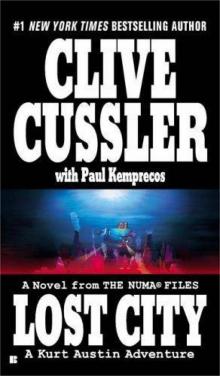 Lost City nf-5
Lost City nf-5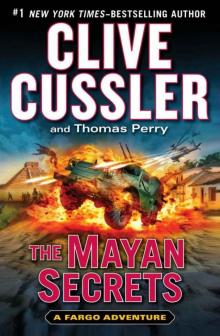 The Mayan Secrets fa-5
The Mayan Secrets fa-5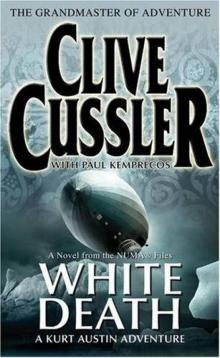 White Death nf-4
White Death nf-4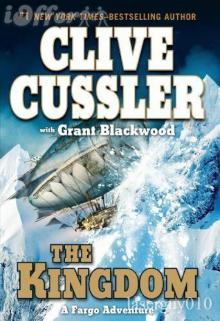 The Kingdom fa-3
The Kingdom fa-3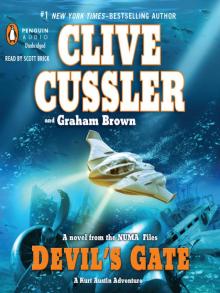 Devil's Gate nf-9
Devil's Gate nf-9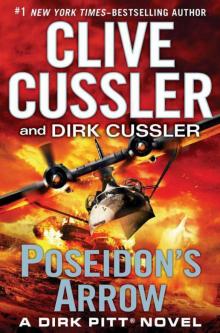 Poseidon's Arrow dp-22
Poseidon's Arrow dp-22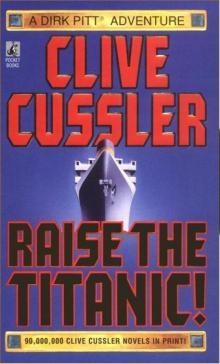 Raise the Titanic dp-4
Raise the Titanic dp-4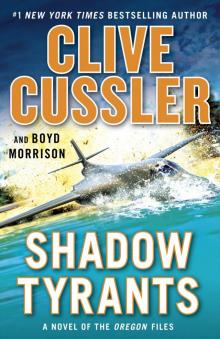 Shadow Tyrants--Clive Cussler
Shadow Tyrants--Clive Cussler Sacred Stone of-2
Sacred Stone of-2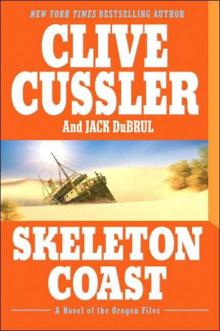 Skeleton Coast tof-4
Skeleton Coast tof-4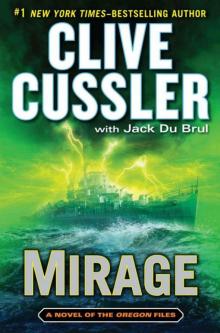 Mirage tof-9
Mirage tof-9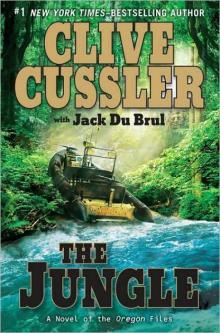 The Jungle of-8
The Jungle of-8 The Emperor's Revenge (The Oregon Files)
The Emperor's Revenge (The Oregon Files)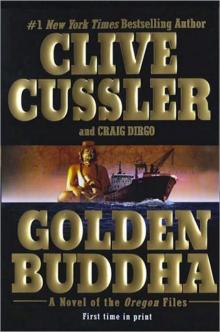 Golden Buddha of-1
Golden Buddha of-1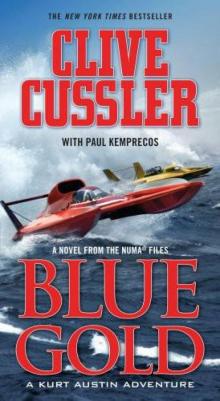 Blue & Gold
Blue & Gold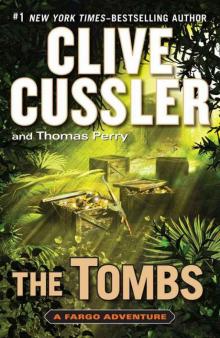 The Tombs fa-4
The Tombs fa-4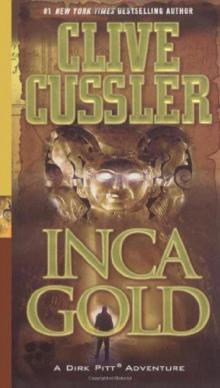 Inca Gold dp-12
Inca Gold dp-12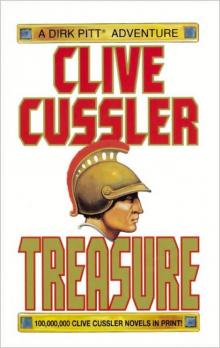 Treasure dp-9
Treasure dp-9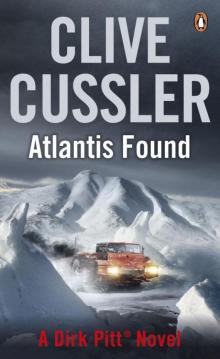 Atlantis Found dp-15
Atlantis Found dp-15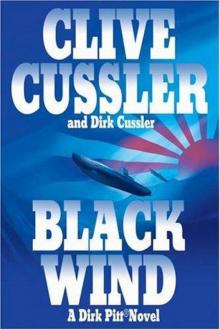 Black Wind dp-18
Black Wind dp-18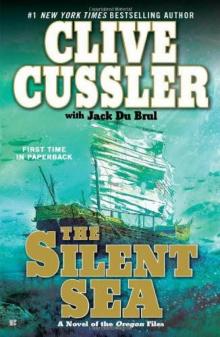 the Silent Sea (2010) tof-7
the Silent Sea (2010) tof-7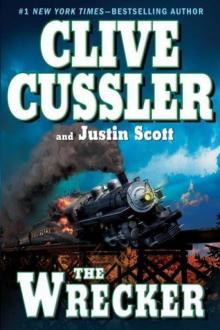 The Wrecker ib-2
The Wrecker ib-2 Fire Ice nf-3
Fire Ice nf-3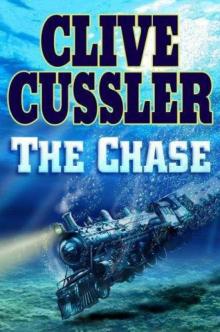 The Chase ib-1
The Chase ib-1 Sahara
Sahara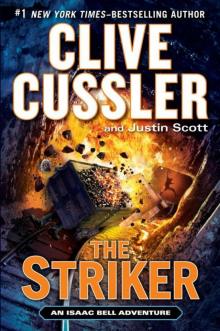 The Striker ib-6
The Striker ib-6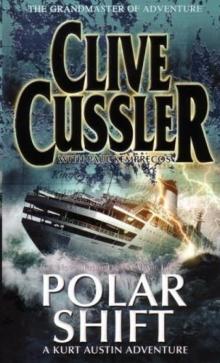 Polar Shift nf-6
Polar Shift nf-6 The Race ib-4
The Race ib-4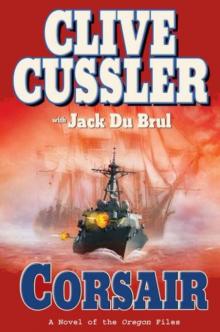 Corsair of-6
Corsair of-6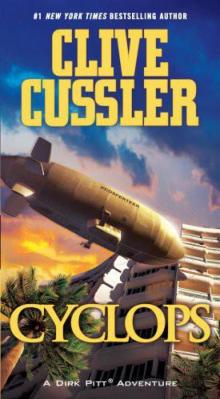 Cyclops dp-8
Cyclops dp-8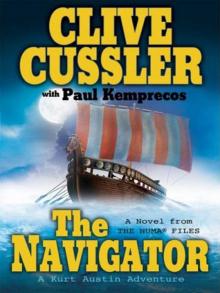 The Navigator nf-7
The Navigator nf-7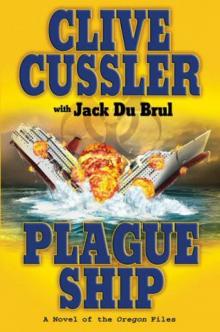 Plague Ship tof-5
Plague Ship tof-5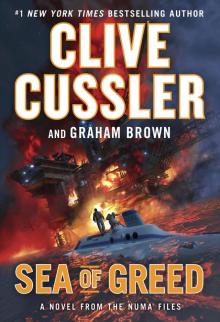 Sea of Greed
Sea of Greed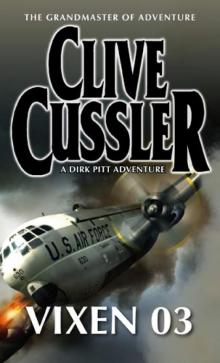 Vixen 03 dp-5
Vixen 03 dp-5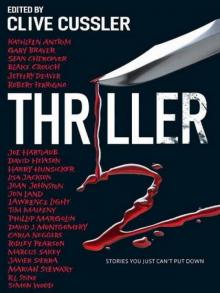 Thriller 2: Stories You Just Can't Put Down
Thriller 2: Stories You Just Can't Put Down